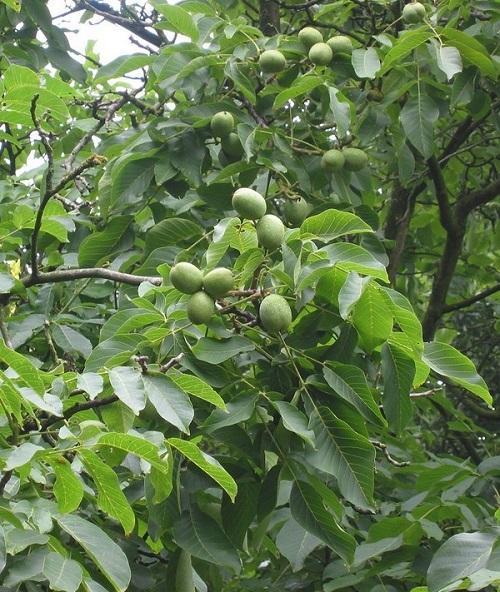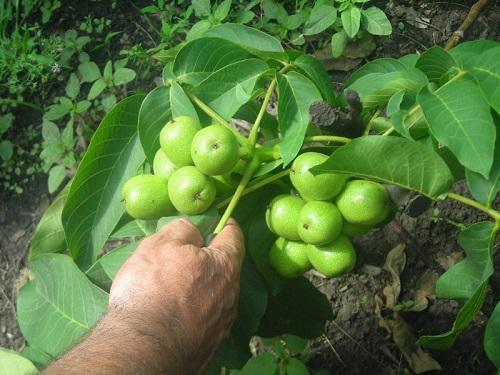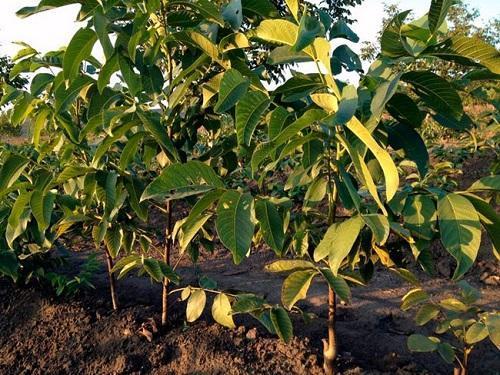When does a young nut begin to bear fruit?
 Unlike fruit trees, the nut is a long-liver, which replaces several generations of owners. It is simply impossible to see a hundred-year-old apple or apricot, while a nut lives for more than one hundred years, while every year there are more and more fruits on the tree. But in order to see the first nuts, you will have to wait a decent amount of time.
Unlike fruit trees, the nut is a long-liver, which replaces several generations of owners. It is simply impossible to see a hundred-year-old apple or apricot, while a nut lives for more than one hundred years, while every year there are more and more fruits on the tree. But in order to see the first nuts, you will have to wait a decent amount of time.
When a walnut begins to bear fruit, is influenced by the group to which a particular variety belongs.
On average, the first nuts appear on the branches no earlier than 6-8 years. Some species give a crop only from 10-12 years of age. At the same time, there are also nuts that begin bearing fruit in the fourth year, and even earlier.
Walnut classification

All nuts, depending on the time of the onset of the first fruiting and the quality of the fruit, are divided into three groups:
- Large-fruited... They usually bear fruit from the age of 6, the fruits weigh more than 15 g. Popular varieties of this group: Bomba (one nut weighing 30 g), Skinosky (19 g), Memory of Minov (from 15.2 to 18.5 g).
- Ordinary... They begin to bear fruit in the sixth to eighth year, the weight of one nut does not exceed 12 g.
- Early... They are distinguished by early fruiting, starting from the third year after planting (varieties Dessertny, Izobilny, Urozhainy, Aurora). The earliest variety in this group is Ideal, it bears fruit in the second year.
How to accelerate the fruiting of a nut?

As you can see, the largest nuts give large-fruited varieties. Some gardeners, not wanting to wait 6 years, use special techniques to speed up the appearance of the ovary. The most famous methods include two or three transplanting of young trees. Tellingly, when transplanting, it is necessary to specifically damage the root system, especially roots growing vertically. As a result, the nut stops growing a little, but flower buds begin to form.
Transplanting should be carried out in the spring only in healthy seedlings, respectively, in the second and third year of the nut's life.
Another equally well-known method is called banding. It is carried out in the middle of summer by trees of a somewhat older age - 4-5 years. To do this, a circular incision must be made on the skeletal branch, cutting off the bark without touching the wood. Slightly higher, 2 cm up, make a similar ring, and cover the wounds with garden pitch. This stimulates the redirection of vital juices from the roots to the laying of generative buds.